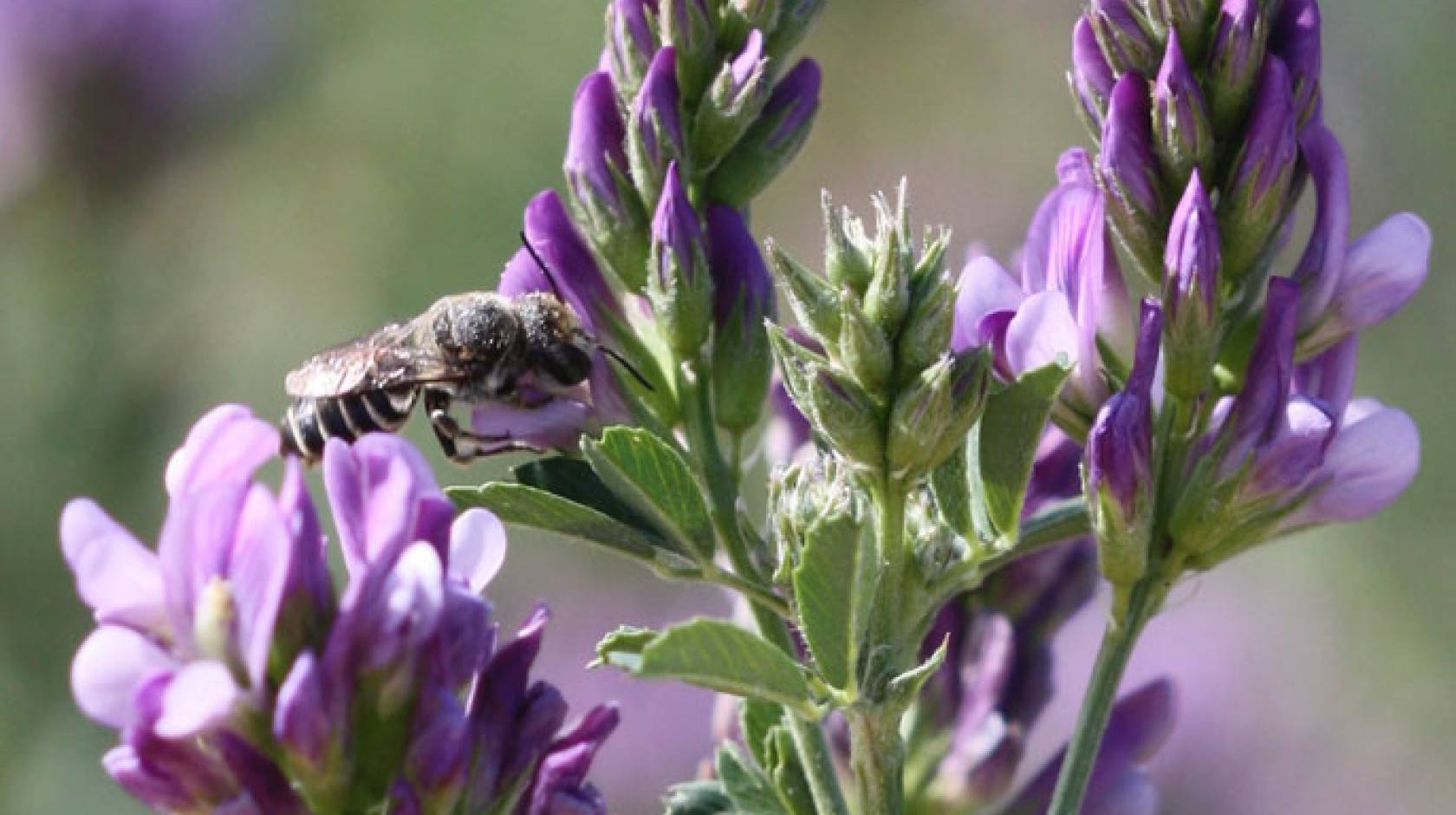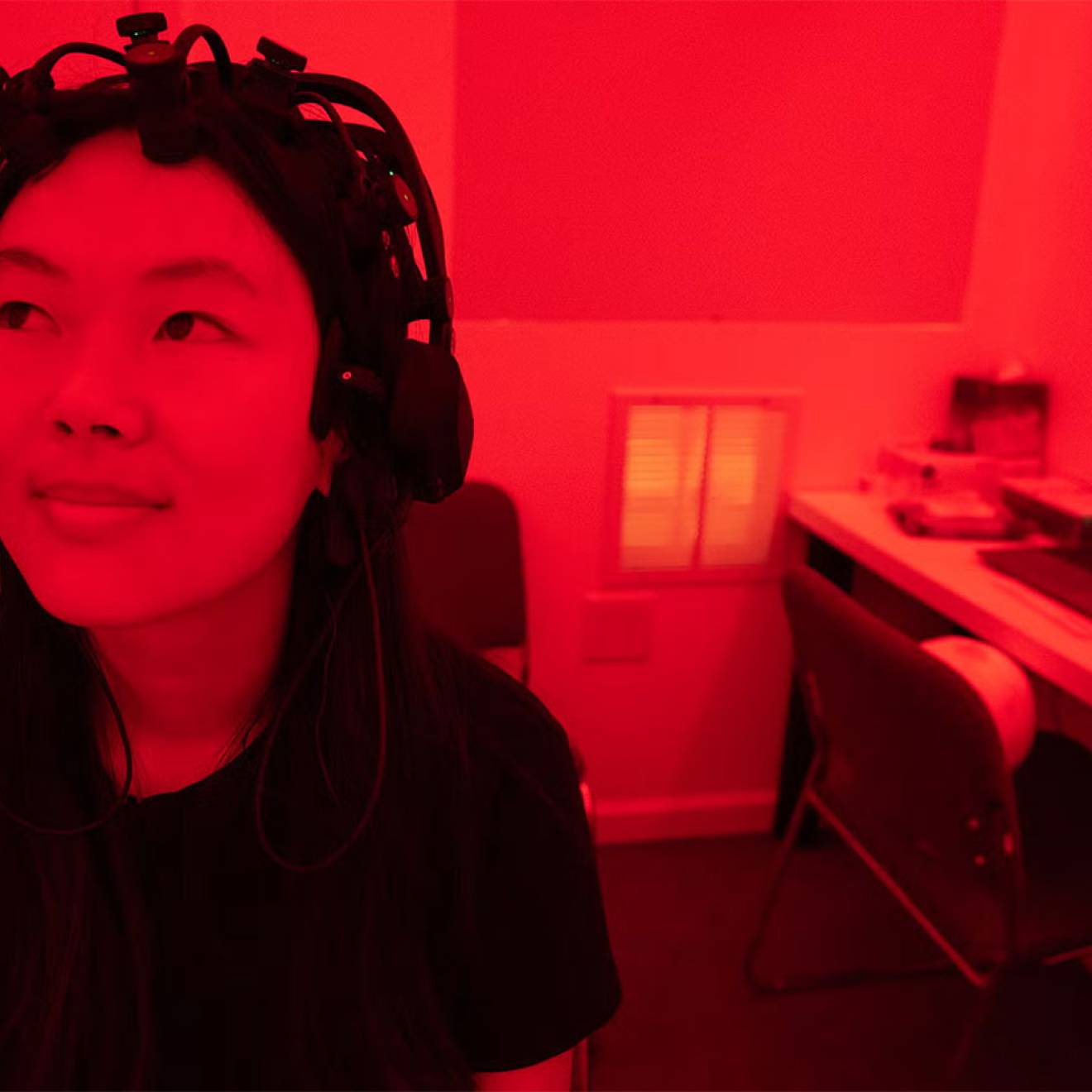Sean Nealon, UC Riverside

A team of researchers, including several from the University of California, Riverside, have found that flowers are a hot spot of transmission of bacteria that end up in the microbiome of wild bees.
The research, which was just published in the journal Microbial Ecology, shows for the first time that multiple flower and wild bee species share several of the same types of bacteria. Bees therefore obtain both food and bacteria from flowers. These bacteria may play important roles in bee health.
The research on the wild bee microbiome, or the community of microorganisms that live in the bee, follows similar work on the human microbiome that has surged in popularity in the past decade. There has been research on the microbiome of honeybees and bumblebees, but very little on wild bees.
While wild bees don’t get the same amount of attention as honey bees or bumblebees, they are a critical piece of the pollination puzzle. Wild bees could become more important because of the decline in numbers of honey bees due to colony collapse disorder, which has resulted in the loss of more than 10 million hives in the past decade.
Currently, honey bees are relied on for almost all commercial pollination needs.
Putting all our pollination needs in one basket
“We are putting all our pollination needs in one basket,” said Quinn McFrederick, an assistant professor of entomology at UC Riverside who is the lead author of the paper. “What if this collapses?
Like honey bees, wild bees pollinate crops, but there is no way to effectively manage them so they can be shipped to a site, like honeybees are, to pollinate a specific crop, such as almond trees in central California.
“People have said that wild bees are like an insurance policy,” McFrederick said. If we can’t meet our pollination needs with honey bees, we need to better understand wild bees.”
For this research, McFrederick and co-authors collected bees and flowers at two sites in Texas and one on the UC Riverside campus. He simulated bee nests by drilling holes into wood and placing these nests in fields with wildflowers. (The wild bees naturally nest in abandoned holes in trees created by beetles.)
The bees established nests in wood and McFrederick collected them and analyzed the microbiomes of their guts and the pollen they were carrying.
Shared bacteria may be beneficial
At the same sites, he also collected flowers that the bees visited and flowers that they didn’t visit. To ensure flowers had not been visited by bees, he placed bags over them before they bloomed and then picked them once they matured and opened.
He found that the bacteria were present on the flowers whether they were bagged or not. The presence of bee-associated bacteria in bagged flowers suggests the bacteria may be transmitted to flowers via plant surfaces, the air or small insects, he said.
The UC Riverside researchers believe the bacteria shared by flowers and wild bees may be beneficial. Their current research is studying that more closely.
One reason McFrederick believes the bacteria is beneficial is because of the presence of Lactobacillusbacteria, which were found on all the flower and bee samples.
Lactobacillus is a group of bacteria that includes many species used by humans to preserve everything from kimchi and pickles to sourdough bread and sauerkraut. McFrederick believes that the bacteria might help preserve the nectar and pollen the wild bee stores in her nest as a food source for her soon-to-be born larvae.
The paper is called “Flowers and wild megachilid bees share microbes.” In addition to McFrederick, the authors are: Amanda Hale, Kaleigh A. Russell and Hoang Q. Vuong, graduate students of UC Riverside; Jason M. Thomas, of California State University, Fresno; John L. Neff, of the Central Texas Melittological Institute; and Ulrich G. Mueller, of the University of Texas at Austin.
The research was supported by the National Science Foundation.

